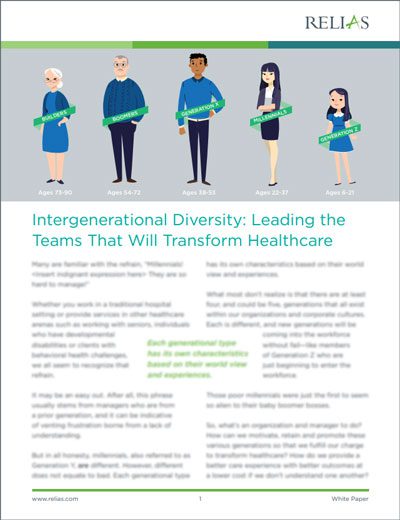For the first time in modern history, workers from five different generations are in the workforce. This can make managing generational differences in the workplace seem daunting. Fortunately, this issue does not have to be as complicated as it seem.
Tips for managing generational differences in the workplace

The state of the economy and job market when one enters the workforce can have a significant impact on what they want from a job. For example, if someone entered the workforce during the COVID-19 pandemic, remote work (if possible), masking, and text-based communication may seem like the norm.
With that said, everyone is different and one’s generation does not necessarily determine one’s work preferences. To effectively manage workers from so many generations, you need to keep three simple tips in mind: communication, respect, and engagement.
Establish open, clear communication
When it comes to managing generational differences in the workplace, communication is key. Leaders need to listen as much as they speak, and make sure that when they do speak, they’re doing so in a way that all their team members will understand.
For one-on-one interactions, leaders can tailor the communication style even more to the person they’re speaking with. For example, you can ask everyone if they’re more comfortable having a meeting with managers in person or via video chat. This way, you can address both personal and generational differences that exist around tele- verses in–person communication.
Most importantly, leaders need to show that they are willing to step out of their own comfort zone to meet the needs of their team.
Respect people’s differences
As Gallup points out, employees who know “they are respected as individuals at work” are more likely to be engaged.
Respect can look different to everyone though, which makes this approach to increasing employee engagement seem like a gargantuan undertaking for any organization with a generationally diverse staff. Understanding some shared characteristics of generations can help provide a foundation for respecting individuals, especially when you could have four or five generations on staff.
Organizations looking to retain a generationally diverse staff should incorporate teaching around managing generational differences in the workplace, just as they would emotional intelligence or cultural diversity.
Engage your staff
No matter what generation an individual belongs to, they want to feel engaged at work. This is especially true in the healthcare sector, where many get into the field to help and engage with others.
Finding ways to engage staff is not only an effective means of managing generational differences in the workplace. It can also help to retain a generationally diverse workforce.
Retaining talent when turnover in health care often exceeds 20% can be a costly challenge — and the costs extend far beyond the financial costs of hiring and onboarding a new employee. The loss of service to vulnerable patient populations, the impact on morale, and the risk associated with new hires’ potential knowledge gaps all negatively affect your organization.
Engaged employees are significantly less likely to leave, and an engaged workforce can produce several positive outcomes:
- Improved productivity
- Lower turnover
- Fewer patient safety incidents
Why is everyone talking about millennials and Gen Z?

As millennials are projected to compose 75% of the workforce by 2030, managing and retaining this generation is a topic of interest to many businesses. But just because the buzz is about millennials does not mean that you should ignore other generations in your quest for generational competence.
One retention strategy that has proven effective across all generations is providing continuing education opportunities beyond those necessary for compliance. Providing staff with quality continuing education will give them a reason to feel valued, help improve their abilities, and help you develop future leaders from within.
Accounting for generational differences helps you prepare your teams for success — allowing them to provide high quality care for more patients in need.

Intergenerational Diversity: Leading the Teams That Will Transform Healthcare
Each generation has its strengths and weaknesses. To increase your organization’s capacity to adapt in a changing healthcare setting, it is important for you to understand how these nuances can be pieced together to lead a productive and engaged multi-generational team.
DOWNLOAD RESEARCH BRIEF →





